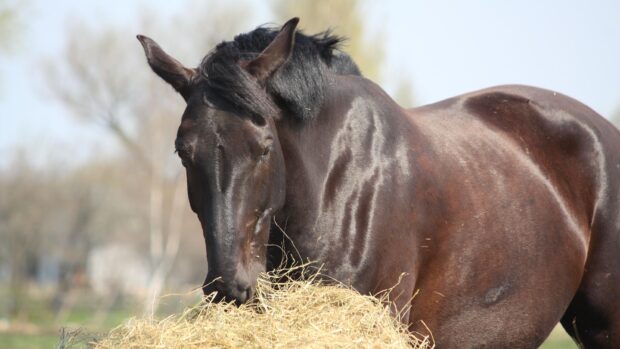A carefully managed hay crop can benefit the pasture enormously, as well as saving you lots of money. It also allows you to rest easy in the knowledge that you are feeding your animals a product of known origin.
However, it does require hard work, machinery, sufficient acreage (at least two acres of pasture per horse, preferably more), a lot of manpower and careful organisation. Only by planning ahead now will you obtain a hay crop to be proud of in 2005, as certain pasture management jobs must be undertaken to help prepare your fields for harvest, such as clearing ditches in September, harrowing fields in October and rotating pasture in November.
Crucial questions
Before setting aside pasture for hay, be sure to ask yourself the following questions:
If the answers are yes, you are well on the road to making hay while the sun shines next summer.
Taking expert advice
Two years ago, the Countryside Agency, Surrey County Council and several other supporters introduced the Horse Pasture Management Project, Britain’s first council-supported and -funded resource, based in Surrey.
Project officer Nicky West regularly advises local horse-owners about the virtues of good pasture management, and has the following advice for anyone considering harvesting their own hay:
The leaf is the most nutritious part of the grass, providing energy and protein. To obtain the optimum feed value, it is best to cut for hay as the principal species begin to flower – after this stage, grass ages, goes to seed and becomes stalky. Energy and protein levels drop as the fibre content increases, while cutting during flowering will encourage re-growth.
Preparing your field for hay
- Undertake grassland analysis and only reseed if required. If docks, thistles or similar invasive weeds are removed or there are bare patches, over-seeding is advisable. However, over-seeding an entire pasture or ploughing and reseeding with more ‘desirable’ species may result in the loss of wildlife habitat.
- If there is no option but to plough and reseed, the period before hay can be cut will depend largely on when the grass is sown, and the species introduced. Autumn sowing with perennial ryegrasses may allow sufficient growth for hay to be cut the following year. Land sown in spring with a mixture of grasses will not be ready for haymaking until the following year.
- Soil test early next year for nutrient and pH levels to identify fertiliser needs. Most agricultural suppliers, colleges or independent labs offer this service.
- Ensure there is access for tractors and implements.
- If land is designated of high conservation interest, check with English Nature before undertaking work. DEFRA advisors should be contacted regarding Stewardship land (land of significant environmental importance formerly used for arable purposes).
Maximise your meadows
Mature meadows represent some of the country’s most important areas for biodiversity, and haymaking can be of great benefit to the pasture. According to David Proudley, technical information manager at the Farming and Wildlife Advisory Group (FWAG), old meadows and pastures, particularly those with a large variety of plant species, may also be suitable for funding as a part of agri-environment schemes.
All home countries – England, Scotland, Wales and Northern Ireland – have their own versions of such schemes, which come under the banner of DEFRA’s England Rural Development Programme (ERDP).
“In England, the Entry Level Environmental Stewardship Scheme (ELS), is to be launched in January 2005,” says David. “It will offer an opportunity to receive payment for undertaking environmentally beneficial practices.
“Applicants will be required to reach a certain points total by choosing from a list of options designed to improve conservation and the environment on their land.” The final details of the scheme have yet to be confirmed, but when they are, FWAG will be able to offer help and advice. Contact your local FWAG group, or visit: www.fwag.org.uk
Contacts:
British Horse Society – tel: 08701 202 244, visit: www.bhs.org.uk
Central Laboratories – for information on grassland analysis and to obtain a sample bag, tel: (01295) 222 700, email: nwebber@central-labs.co.uk
Department for Environment, Food and Rural Affairs (DEFRA) – tel: 08459 335 577, visit: font class=section>www.defra.gov.uk
English Nature, (Government agency funded by DEFRA) – tel: (01733) 455 000, visit: www.english-nature.org.uk
Farming and Wildlife Advisory Group (FWAG) – tel: (02476) 696 699, visit: www.fwag.org.uk
Surrey Horse Pasture Management Project – tel: (01372) 741 783, visit: www.surreycc.gov.uk/horsepastureproject
The Countryside Agency – tel: (020) 7340 2900, visit: www.countryside.gov.uk
The Environment Agency – tel: 08708 506 506, visit: www.environment-agency.gov.uk



